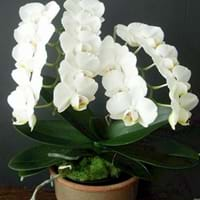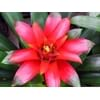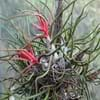Life Span
Perennial
Perennial
Origin
Europe, Eastern Europe, Northern Europe, Southern Europe, Western Europe, United Kingdom, Russia/Siberia, Mediterranean, Turkey, Northern Africa, Central Asia, Eastern Asia, Western Asia, India, Nepal, China, Japan, Korea
Southeastern Asia, Australia
Types
Bigleaf hydrangea, Hortensia, Smooth hydrangea, Oakleaf hydrangea, Annabelle
lovely moth orchid is a type of orchid
Number of Varieties
Not Available
Habitat
Forest edges, Hillside, Woods
close to waterfalls, Humid climates, Rainforest, Thickets
USDA Hardiness Zone
5-9
12-15
Sunset Zone
Not Available
H2
Habit
Weeping
Clump-Forming
Flower Color
Yellow green
White
Flower Color Modifier
Not Available
Not Available
Fruit Color
Not Available
Not Available
Leaf Color in Spring
Light Green, Yellow green
Green
Leaf Color in Summer
Green, Yellow green
Green, Bronze
Leaf Color in Fall
Green, Yellow green
Green, Bronze
Leaf Color in Winter
Olive, Yellow green
Green, Bronze
Leaf Shape
Oblovate
Oblong elliptic
Plant Season
Spring, Summer, Fall, Winter
Spring, Fall, Winter
Sunlight
Full Sun, Partial Sun
Partial Sun, Partial shade
Type of Soil
Not Available
Not Available
The pH of Soil
Not Available
Not Available
Soil Drainage
Not Available
Well drained
Bloom Time
Early Spring, Spring, Late Winter
Early Spring, Spring, Fall, Late Fall, Early Winter, Winter, Late Winter
Tolerances
Not Available
Not Available
Where to Plant?
Container, Ground
Container, Ground, Pot
How to Plant?
Seedlings, Stem Planting
Divison, Seedlings, Transplanting
Plant Maintenance
Medium
High
Watering Requirements
Not Available
Do Not over Water, Water when soil is dry
In Summer
Average Water
Drought Tolerant
In Spring
Moderate
Less Watering
In Winter
Average Water
Average Water
Soil pH
Not Available
Not Available
Soil Type
Not Available
Not Available
Soil Drainage Capacity
Not Available
Well drained
Sun Exposure
Full Sun, Partial Sun
Partial Sun, Partial shade
Pruning
Remove damaged leaves, Remove dead branches, Remove dead leaves
Remove damaged leaves
Fertilizers
All-Purpose Liquid Fertilizer
All-Purpose Liquid Fertilizer
Pests and Diseases
Red blotch
Bacterial Blight, Black Spot, Botrytis Cinerea, Brown Rot
Plant Tolerance
Not Available
Not Available
Flowers
Insignificant
Showy
Flower Petal Number
Single
Single
Foliage Texture
Medium
Coarse
Foliage Sheen
Matte
Glossy
Attracts
Birds
Not Available
Allergy
Chest tightness, Diarrhea, Dizziness, Nausea, Vomiting
Not Available
Aesthetic Uses
Not Available
Beautification, Bouquets, Showy Purposes
Beauty Benefits
Not Available
Not Available
Edible Uses
Not Available
No
Environmental Uses
Air purification
Indoor Air Purification
Medicinal Uses
Fever, Kidney problems, Urinary tract problems
Not Applicable
Part of Plant Used
Flowers, Root
Flowers
Other Uses
Not Available
Used as Ornamental plant
Used As Indoor Plant
Not Available
Yes
Used As Outdoor Plant
Yes
Yes
Garden Design
Not Available
Container, Cutflower, Hanging Basket, Houseplant, Tropical
Botanical Name
VISCUM album
PHALAENOPSIS amabilis
Common Name
European Mistletoe
Lovely Moth Orchid, Lovely Phalaenopsis
In Hindi
Hydrangea
Lovely Moth Orchid
In German
Hortensie
Schöne Phalaenopsis
In French
Hortensia
Belle Phalaenopsis
In Spanish
Hortensia
Preciosa orquídea de polilla
In Greek
υδραγεία
Υπέροχο Moth Orchid
In Portuguese
Hortênsia
Encantador Moth Orchid
In Polish
Hortensja
Piękny Moth Orchid
In Latin
Hibiscus
Quæcumque amabilia Moth Orchid
Phylum
Not Available
Tracheophyta
Class
Not Available
Liliopsida
Order
Not Available
Asparagales
Family
Viscaceae
Orchidaceae
Genus
Not Available
Phalaenopsis
Clade
Not Available
Angiosperms, Monocots
Tribe
Not Available
Not Available
Subfamily
Not Available
Epidendroideae
Number of Species
Not Available
Not Available
Importance of European Mistletoe and Lovely Moth Orchid
Want to have the most appropriate plant for your garden? You might want to know the importance of European Mistletoe and Lovely Moth Orchid. Basically, these two plants vary in many aspects. Compare European Mistletoe and Lovely Moth Orchid as they differ in many characteristics such as their life, care, benefits, facts, etc. Every gardener must at least have the slightest clue about the plants he wants to plant in his garden. Compare their benefits, which differ in many ways like facts and uses. The medicinal use of European Mistletoe is Fever, Kidney problems and Urinary tract problems whereas of Lovely Moth Orchid is Not Applicable. European Mistletoe has beauty benefits as follows: Not Available while Lovely Moth Orchid has beauty benefits as follows: Not Available.
Compare Facts of European Mistletoe vs Lovely Moth Orchid
How to choose the best garden plant for your garden depending upon its facts? Here garden plant comparison will help you to solve this query. Compare the facts of European Mistletoe vs Lovely Moth Orchid and know which one to choose. As garden plants have benefits and other uses, allergy is also a major drawback of plants for some people. Allergic reactions of European Mistletoe are Chest tightness, Diarrhea, Dizziness, Nausea and Vomiting whereas of Lovely Moth Orchid have Not Available respectively. Having a fruit bearing plant in your garden can be a plus point of your garden. European Mistletoe has showy fruits and Lovely Moth Orchid has no showy fruits. Also European Mistletoe is not flowering and Lovely Moth Orchid is not flowering . You can compare European Mistletoe and Lovely Moth Orchid facts and facts of other plants too.




